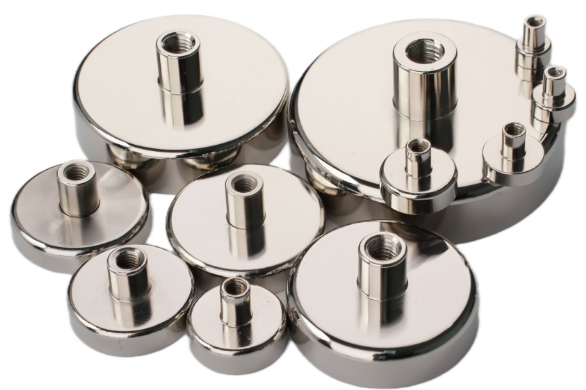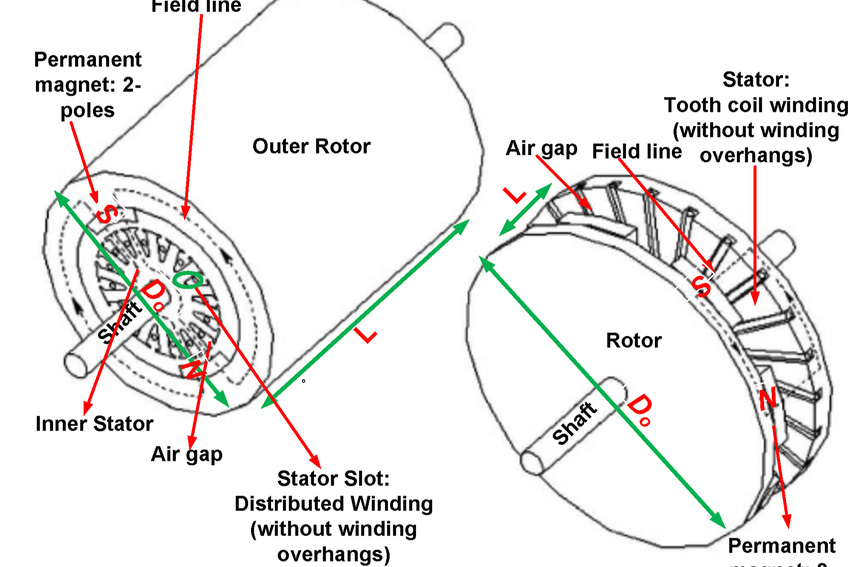Permanent Magnets in Magnetic Resonance Equipment
In our last articles, we've introduced permanent magnets in the electric power steering system (EPS), and permanent magnets used in magnetic separators, so in today's article, let's take a look at the permanent magnets in magnetic resonance equipment.
 Permanent Magnets in Magnetic Resonance Equipment
Permanent Magnets in Magnetic Resonance Equipment
Nuclear Magnetic Resonance (NMR) is a nuclear physical phenomenon. As early as 1946, Block and Purcell reported this phenomenon and applied it to spectroscopy. Lauterbur published MR imaging technology in 1973, making NMR not only used in physics and chemistry, but also in clinical medicine. In recent years, MR imaging technology has developed rapidly and has become more mature and perfect. Its inspection scope basically covers all systems of the whole body and is promoted and applied worldwide. To accurately reflect its imaging basis and avoid confusion with radionuclide imaging, it is now called magnetic resonance imaging. Magnetic resonance imaging requires a strong and uniform magnetic field, which is generated by a magnet. Magnets are the most important and most expensive part of MR equipment. Currently, there are two types of magnets commonly used: permanent magnets and electromagnets. Among them, electromagnets are divided into two types: normal conducting and superconducting.
- Normal conducting electromagnets use a strong direct current to generate a magnetic field through a coil. The power consumption to maintain the magnetic field of the main magnet is about 100kW. Generally, it takes several hours to energize before the magnetic field can reach a stable state. A large current flowing through the coil will generate a lot of heat, which must be dissipated by cooling water through a heat exchanger.
- Superconducting electromagnets are currently used more. In the superconducting state, there is no resistance loss when current flows through the conductor so that the conductor does not heat up. A wire of the same diameter can pass a larger current without being damaged in a superconducting state. A coil made of superconducting material can generate a strong magnetic field with a strong current, and after the external current is cut off, the current in the superconducting coil remains unchanged, so the superconducting magnetic field is extremely stable.
- After the permanent magnets are magnetized, the magnetism can be maintained for a long time, and the magnetic field strength is stable, so the magnet is easy to maintain and maintain a low cost. The permanent magnets in magnetic resonance equipment include AlNiCo magnets, ferrite magnets, and neodymium magnets, etc. Among them, neodymium magnets have the highest magnetic energy product and can reach the maximum field strength with a small amount (to reach 0.2T field strength, 23 tons of AlNiCo magnets are needed, but if neodymium magnets are used, only 4 tons). The disadvantage of permanent magnets as the main magnet is that it is difficult to reach a field strength of 1T. At present, the field strength is generally below 0.5T and can only be used in low-frequency magnetic resonance equipment. When the permanent magnet is used as the main magnet, the magnetic resonance device can be designed in a ring shape, and the instrument is in a semi-open form. This structure is a great boon for children or people with claustrophobia.
Conclusion
Thank you for reading our article and we hope it can help you to have a better understanding of the permanent magnets in magnetic resonance equipment. If you want to know more about permanent magnets, we would like to advise you to visit Stanford Magnets for more information. Stanford Magnets is a leading magnet supplier across the world, that has been involved in R&D, manufacturing, and sales of magnets since the 1990s. It provides customers with high-quality permanent magnets like neodymium magnets, SmCo magnets, AlNiCo magnets, and ferrite magnets (ceramic magnets) at a very competitive price.















